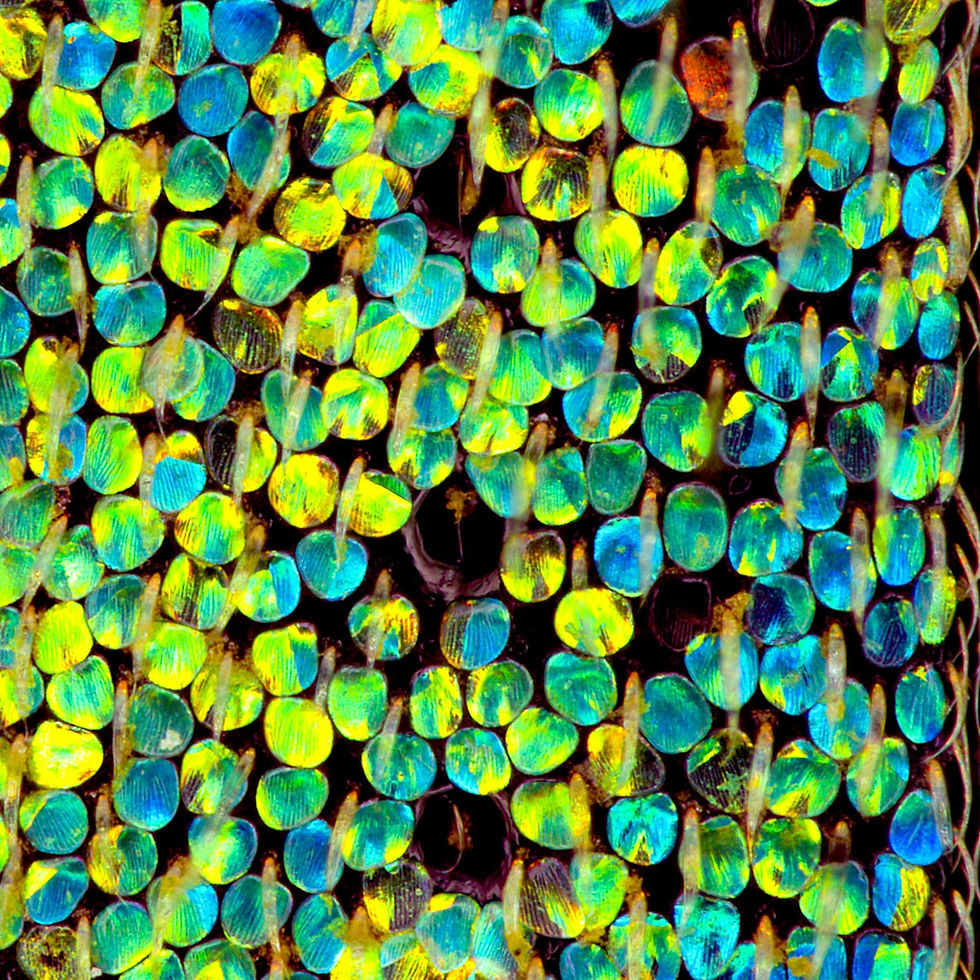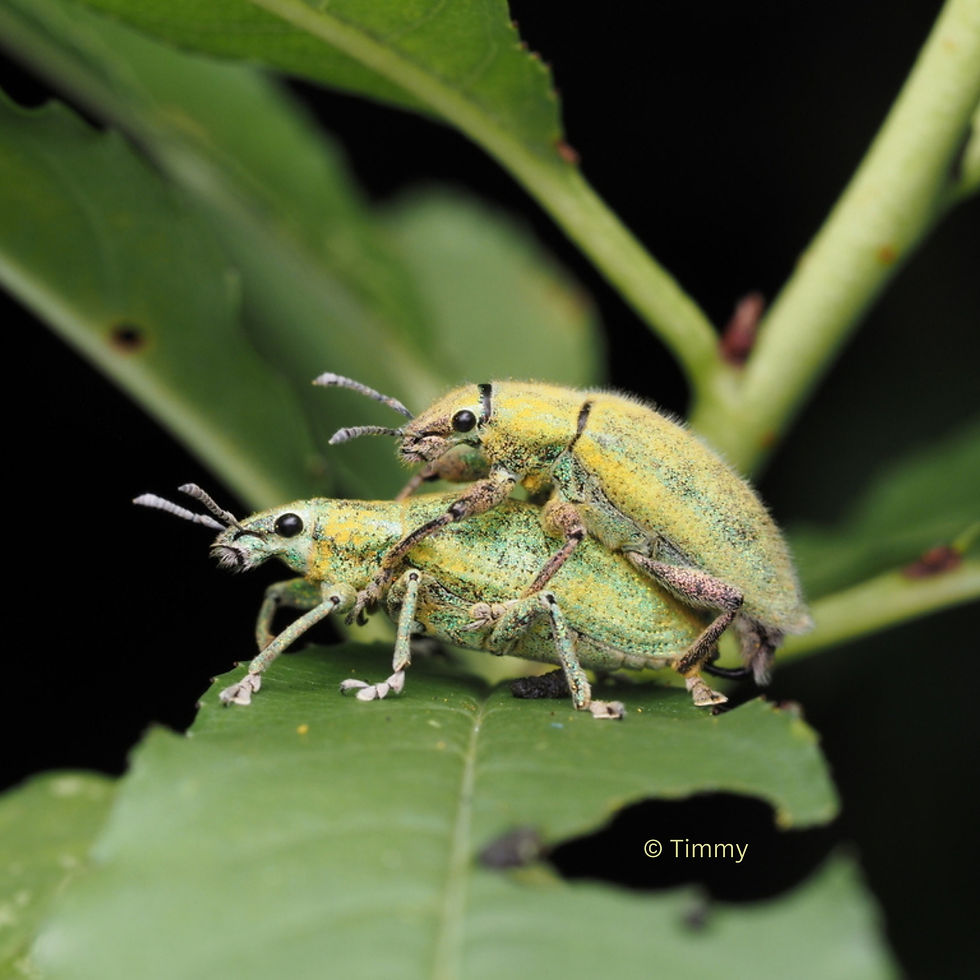Beetles (order Coleoptera) are the most diverse organisms on Earth (besides maybe for microorganisms), with one in every five known species being a beetle. The word “beetle” derives from the Old English word for “biter” referring to the well-developed mandibles of most Coleoptera. Have you, however, ever heard of the farm biters - 𝘏𝘺𝘱𝘰𝘮𝘦𝘤𝘦𝘴 𝘱𝘶𝘭𝘷𝘪𝘨𝘦𝘳 (Herbst, 1795). This species belongs to the Curculionidae family, the most diverse family in Coleoptera including 86,100 species! Although 𝘏. 𝘱𝘶𝘭𝘷𝘪𝘨𝘦𝘳 has tiny mouthparts at the tip of its long beak for chewing, they are known for their massive damage to crops due to their herbivorous diet. But are they really that weEVIL? Let’s find out more about them below!
𝘏. 𝘱𝘶𝘭𝘷𝘪𝘨𝘦𝘳 is also known as the gold dust weevil or the green weevil. They are famous for their broad and long snouts (nose-like structure) and their shining green glitter all over their 14 mm long body. They also possess clubbed antennae, a pair of large black eyes, and chewing mouthparts. Gold dust weevils, are native to Southeastern Asia where they are widespread ranging from India to Taiwan, including Hong Kong. The gold dust weevils use a wide range of habitats including forests or agricultural cropland where they may enjoy maize and cotton.

A striking aspect of their morphology is the iridescent green glitter that covers their body. This glittering “skin” is produced by the association of scales and photonic crystals allowing them to camouflage from predators, like birds, and thus increase their survival. This feature is also found in other beetle species presenting multilayers of photonic crystals on their elytra (fore wing case) and other body parts, allowing them to be highly reflective and simulating the reflectance of green leaves. Gold dust weevils possess a secret: a fascinating transformation takes place as the weevils age. Their initial metallic green glitter gradually fades, giving way to a subtle grayish-green hue.

A key feature of weevils is the presence of a long “beak” and of its function. This long snout is not used for piercing or sucking their meals but to actually bore holes in soil, plants, or grains to lay eggs. The gold dust weevil is herbivorous and feeds on plant parts above ground, while their larvae live and pupate in the soil, consuming living plant roots. Adult weevils also feed on young bushes or stored food products. Therefore, some people view them as pests as they may damage plants by chewing the sprouts. Yet, they are extremely important to the ecosystem. They are indeed underappreciated pollinators, especially in tropical areas. Weevils assist pollination by transferring pollen, especially for oil palm tree, between male and female flowers to promote fertilization and fruit development.

So next time you encounter a weevil, try to give it a second thought on these green misunderstood “devils”. In the meantime, visit the Hong Kong Biodiversity Museum to appreciate the diversity of weevils and beetles and learn more fascinating aspects of their lives!
Text: Lydia Chang

Comments